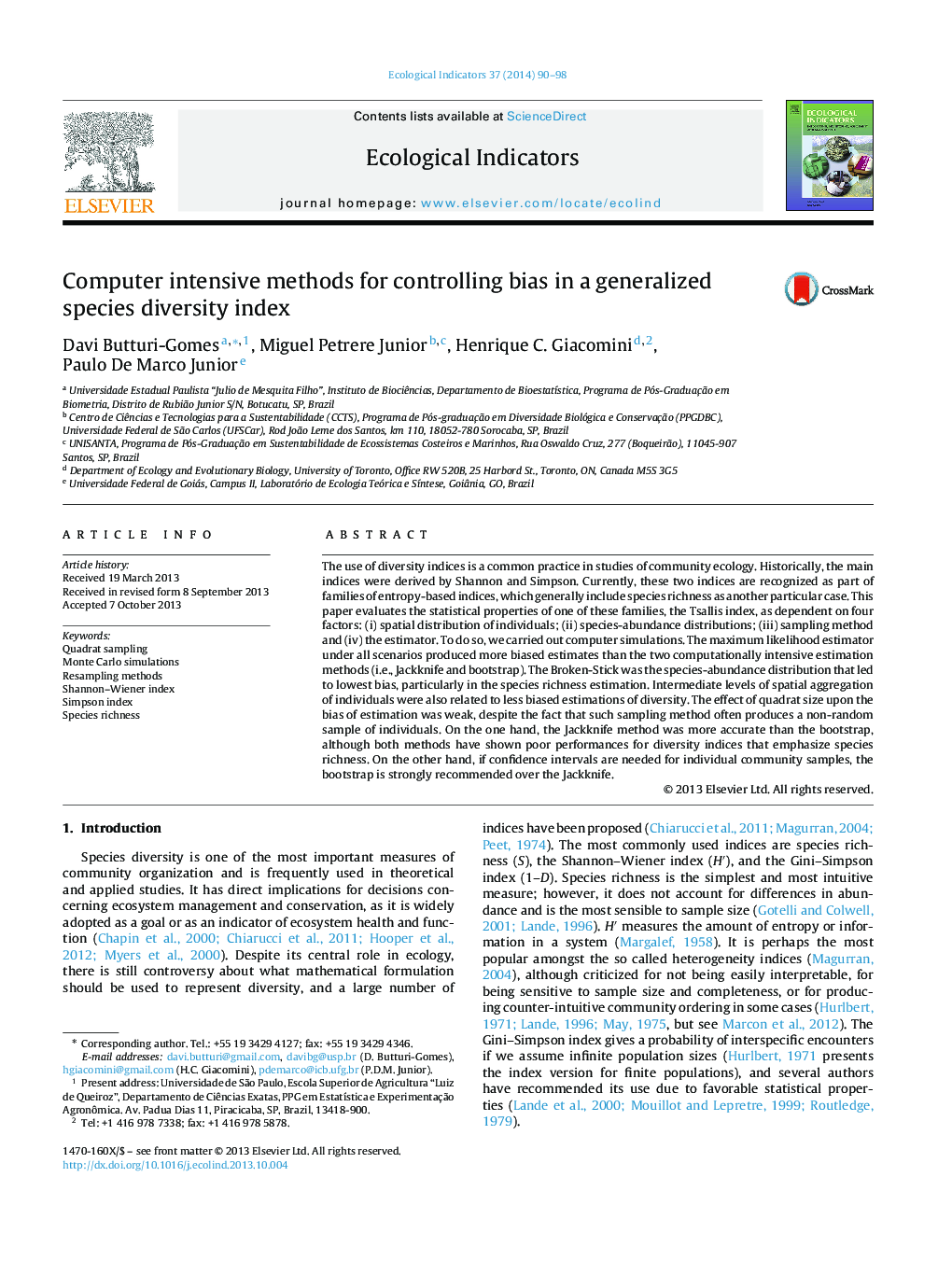| Article ID | Journal | Published Year | Pages | File Type |
|---|---|---|---|---|
| 4373254 | Ecological Indicators | 2014 | 9 Pages |
•We evaluated the bias in the estimation of Tsallis diversity index in many scenarios.•Species-abundance distribution was the most important factor affecting bias.•Resampling methods were most effective in controlling bias from non-random sampling.•A “U” shaped curve relating estimation bias and spatial aggregation was found.
The use of diversity indices is a common practice in studies of community ecology. Historically, the main indices were derived by Shannon and Simpson. Currently, these two indices are recognized as part of families of entropy-based indices, which generally include species richness as another particular case. This paper evaluates the statistical properties of one of these families, the Tsallis index, as dependent on four factors: (i) spatial distribution of individuals; (ii) species-abundance distributions; (iii) sampling method and (iv) the estimator. To do so, we carried out computer simulations. The maximum likelihood estimator under all scenarios produced more biased estimates than the two computationally intensive estimation methods (i.e., Jackknife and bootstrap). The Broken-Stick was the species-abundance distribution that led to lowest bias, particularly in the species richness estimation. Intermediate levels of spatial aggregation of individuals were also related to less biased estimations of diversity. The effect of quadrat size upon the bias of estimation was weak, despite the fact that such sampling method often produces a non-random sample of individuals. On the one hand, the Jackknife method was more accurate than the bootstrap, although both methods have shown poor performances for diversity indices that emphasize species richness. On the other hand, if confidence intervals are needed for individual community samples, the bootstrap is strongly recommended over the Jackknife.
